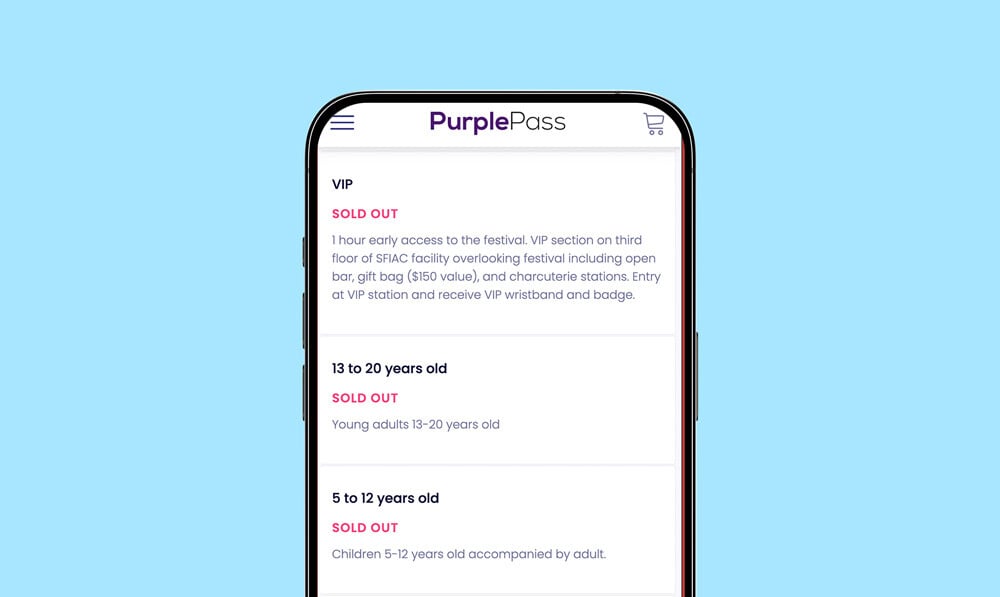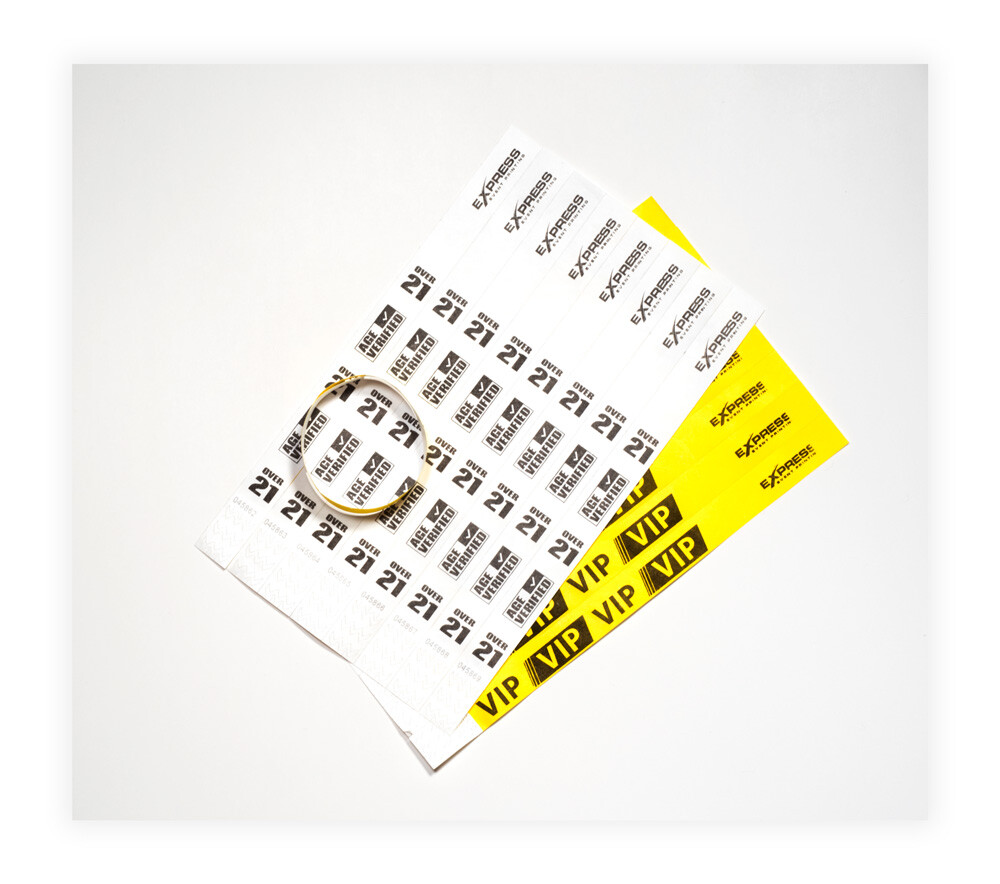Managing Age Compliance at Events: 7 Tips for 21+ Areas
When organizing events that include age-restricted areas or activities, such as beer gardens or 21+ sections, it’s essential to have effective strategies in place for monitoring and verifying the ages of attendees. This ensures not only legal compliance but also the safety and enjoyment of all guests.
In this blog, we’ll explore practical tips and best practices for event planners to manage age restrictions at events, with a focus on creating a smooth and secure experience for everyone.
Tip #1: Clear Communication and Signage
Clear communication about age restrictions helps prevent confusion and sets expectations from the outset. This reduces the chances of underage individuals attempting to enter restricted areas.
- Pre-Event Communication: Clearly state age restrictions on all promotional materials, including websites, social media posts, and ticketing pages. If certain areas of the event are 21+, make sure this information is prominently displayed.
- On-Site Signage: Use large, visible signs at the entrance of the event and at the entrances to restricted areas to indicate that they are for 21+ attendees only. Consider using different languages or symbols to ensure everyone understands the restrictions.
- Ticketing Information: Include a reminder about age restrictions in the confirmation emails and on the tickets themselves. For digital tickets, consider adding a pop-up reminder before finalizing the purchase.

Tip #2: Implement a Robust ID Check System
The most straightforward way to verify ages is by checking IDs at key entry points. A reliable ID check system ensures that only eligible attendees gain access to age-restricted areas or services.
- Dedicated Entry Points: Set up specific entry points for 21+ areas where IDs can be checked by trained staff. These should be separate from general admission lines to avoid bottlenecks.
- Use Technology: Consider using ID scanners or apps that can quickly verify the authenticity of IDs. These tools reduce the risk of fake IDs and speed up the process.
- Train Your Staff: Ensure that all staff responsible for checking IDs are trained to recognize valid IDs and understand how to handle situations where an ID is questionable. Provide them with guidelines on what to do if an attendee refuses to show ID or becomes confrontational.
Tip #3: Utilize Wristbands and Stamps
Wristbands and stamps are effective visual indicators that help staff quickly identify who is eligible to enter 21+ areas or purchase alcohol. They also reduce the need for repeated ID checks, improving the flow of the event.
How to Implement:
- Color-Coded Wristbands: Issue different colored wristbands based on age groups or access levels. For example, use one color for 21+ attendees and another for those under 21. Ensure the wristbands are durable and difficult to remove or transfer.
- Custom Stamps: If wristbands aren’t feasible, consider using custom stamps that are only visible under UV light. This adds an extra layer of security, as the stamps are harder to replicate or tamper with.
- Digital Wristbands: For larger events, consider using RFID wristbands that can be scanned for age verification and also for purchases within the event. These can streamline the process and provide valuable data on attendee behavior.

Tip #4: Designate and Secure 21+ Areas
Clearly designated 21+ areas, such as beer gardens or lounges, help control access and ensure that age restrictions are upheld. These areas should be strategically placed and adequately secured.
- Physical Barriers: Use fences, ropes, or other physical barriers to separate 21+ areas from the rest of the event. This makes it clear where age restrictions apply and prevents accidental entry by underage attendees.
- Staffed Entrances: Place security personnel or event staff at the entrances to these areas to monitor access. They should be trained to check wristbands or stamps and to handle any issues that arise.
- Visible Markings: Mark the boundaries of 21+ areas with clear signage and possibly floor markings or lighting that distinguishes the space from other parts of the event.
Tip #5: Monitor and Enforce Age Restrictions
Even with all the precautions, it’s essential to continually monitor the event to ensure that age restrictions are being respected. This helps prevent underage access and ensures compliance with legal requirements.
How to Implement:
- Roving Security: Have security personnel or staff circulate throughout the event, particularly in areas where alcohol is served, to monitor for wristbands and stamps. They should be empowered to request ID from anyone who appears underage but doesn’t have the proper identification.
- Alcohol Purchase Limits: If applicable, consider limiting the number of alcoholic drinks an attendee can purchase at one time. This can reduce the likelihood of drinks being passed to underage individuals.
- Incident Reporting: Establish a clear protocol for reporting and handling incidents where underage individuals are found in 21+ areas. This could include removing the individual from the area or, in more serious cases, from the event altogether.
Tip #6: Pre-Event Education and Communication
Educating your audience about the importance of age restrictions and the measures in place to enforce them can help minimize issues on the day of the event.
How to Implement:
- Social Media Campaigns: Run a pre-event social media campaign that highlights the importance of age compliance, the need for ID checks, and the consequences of trying to bypass these rules. Use a mix of informative posts, videos, and infographics.
- FAQ Section: Include a detailed FAQ section on your event website that addresses common questions about age restrictions, ID requirements, and wristband policies.
- Email Reminders: Send out email reminders to ticket holders with information about age restrictions, what they need to bring for ID, and where to go for age verification at the event.
Tip #7: Partner with Local Law Enforcement
Partnering with local law enforcement can enhance the credibility and security of your event, particularly when it comes to enforcing age restrictions. Their presence can also deter underage individuals from attempting to gain access to 21+ areas.
- Consultation: Before the event, consult with local law enforcement to ensure that your age verification and enforcement plans comply with local laws and regulations. They can provide valuable insights and suggestions.
- On-Site Presence: Depending on the size and nature of your event, consider having law enforcement officers on-site to assist with age verification and address any legal issues that may arise.
- Post-Event Review: After the event, conduct a review with law enforcement to discuss what worked well and where improvements can be made for future events.
|
Event Printing Services Create full-colored wristbands, tickets, |
Monitoring and enforcing age restrictions at events, especially those with 21+ areas or alcohol service, is critical for legal compliance and the overall success of the event. By implementing these tips—ranging from clear communication and robust ID checks to strategic area designations and partnerships with law enforcement—you can ensure that your event runs smoothly and safely.
Remember, the goal is not only to uphold the law but also to create a positive and enjoyable experience for all attendees.






